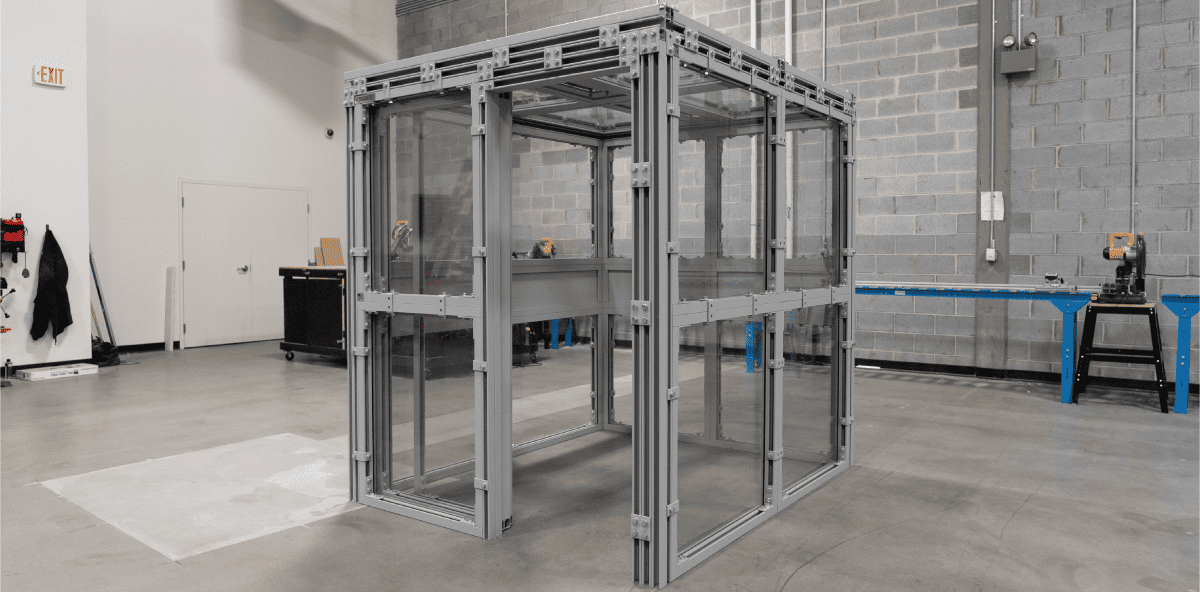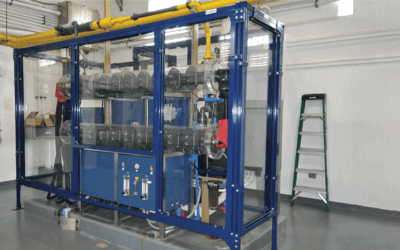As a Project Manager at TotalShield, leader of the blast-resistant enclosures industry, I’ve learned that even the most perfectly engineered product needs proper installation to perform at its best. While our enclosures arrive ready for assembly, we’ve found that offering onsite supervision for our largest shielding rooms guarantees they meet their full potential.
In this blog post, I’ll take you through an onsite assembly step by step, explaining how our team helps customers achieve optimal results.
For this particular project, we got in our hands to install a large Shielded Room of 12x16x8 ft, taking us a total of four days. Our customer had strict security protocols, a tight schedule, and no room for error. Their operations depended on a properly installed enclosure, and our job was to ensure everything went smoothly.
Please note that the photos on this blog post are just illustrative and do not correspond to the mentioned onsite assembly to protect our customer’s privacy.
Why we offer onsite assembly supervision
When a customer invests in one of our blast-resistant enclosures, they’re not just purchasing a product, they’re protecting their personnel and machinery. But even the best-designed enclosure is only as effective as its installation. That’s where our onsite assembly supervision comes in.
While we don’t install the enclosures ourselves, we know them better than anyone. Our team guarantees that every component is assembled correctly, every connection is secure, and every detail matches the original design specifications. Small mistakes can compromise the enclosure’s performance. We prevent these errors before they become costly problems.
The benefits of our onsite supervision go beyond just providing accuracy. It also:
- Saves time. Our guidance streamlines the process, reducing installation time.
- Minimizes downtime. If an issue arises, we troubleshoot in real time to keep the project moving.
- Protects the investment. A correctly assembled enclosure performs as intended, ensuring compliance and longevity.
- Allows for adjustments. If modifications are needed due to site conditions, we can help find a solution quickly.
For many customers, the peace of mind that comes with having our experts onsite is invaluable. They know that from delivery to installation, their enclosure is in the hands of the people who designed it.
Planning and logistics
A successful installation doesn’t start when our customer receives its bast-resistant solution, it starts weeks earlier with meticulous planning. Here’s how we set the stage for a flawless assembly:
- Verification of Components and Documentation: We verify that all necessary parts are accounted for, including the Bill of Materials (BOM) and panel schedules. Each enclosure component is labeled to streamline the process.
- Pre-Assembly Meeting: During this meeting, study the assembly process and clarify any doubts our customer may have. We also provide the assembly manual and a 3D model. This ensures the customer knows which tools (forklifts, scissor lifts, etc.) and PPE (personal protective equipment) they’ll need. We also confirm if electronic devices (laptops, tablets) can be used onsite and review our customer’s restrictions, such as delivery timelines and safety protocols.
- Packaging Inspection: Before sealing the boxes, we check for any physical damage to prevent issues upon arrival.
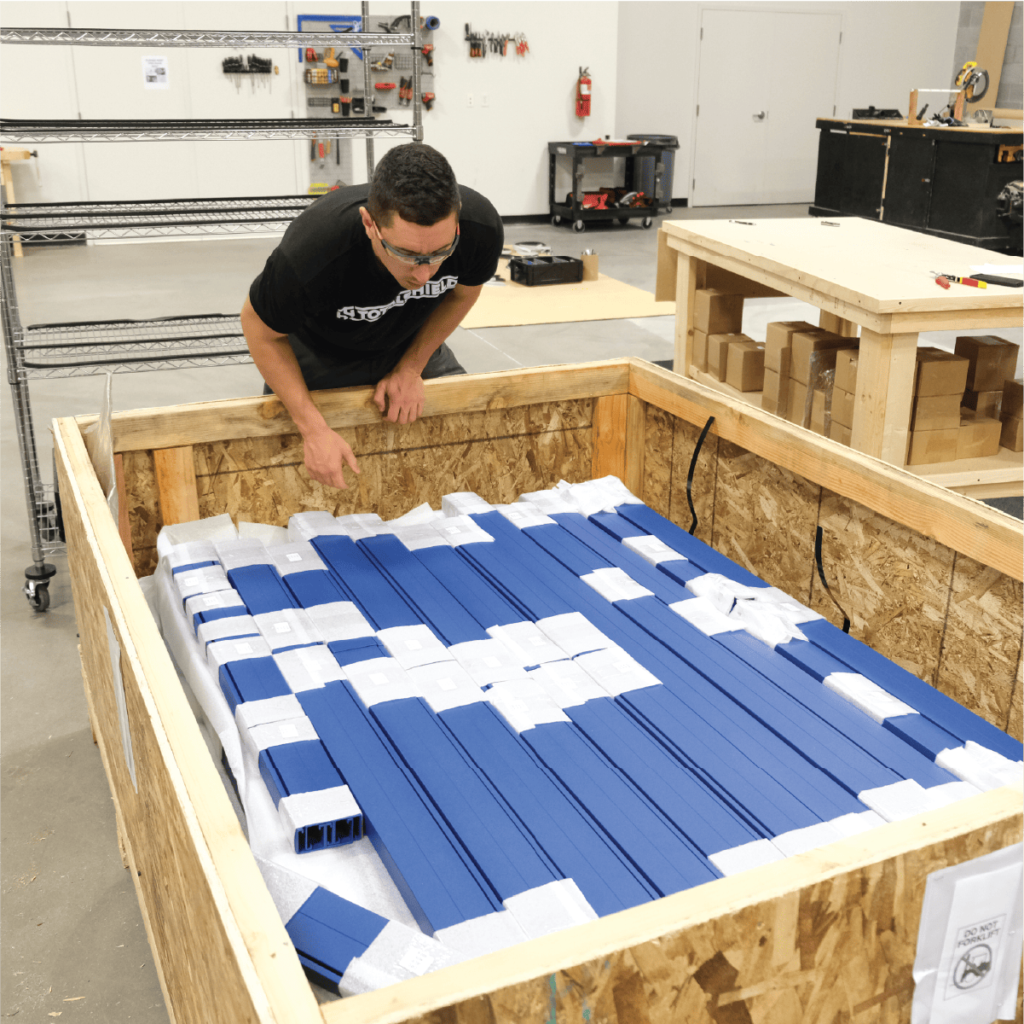
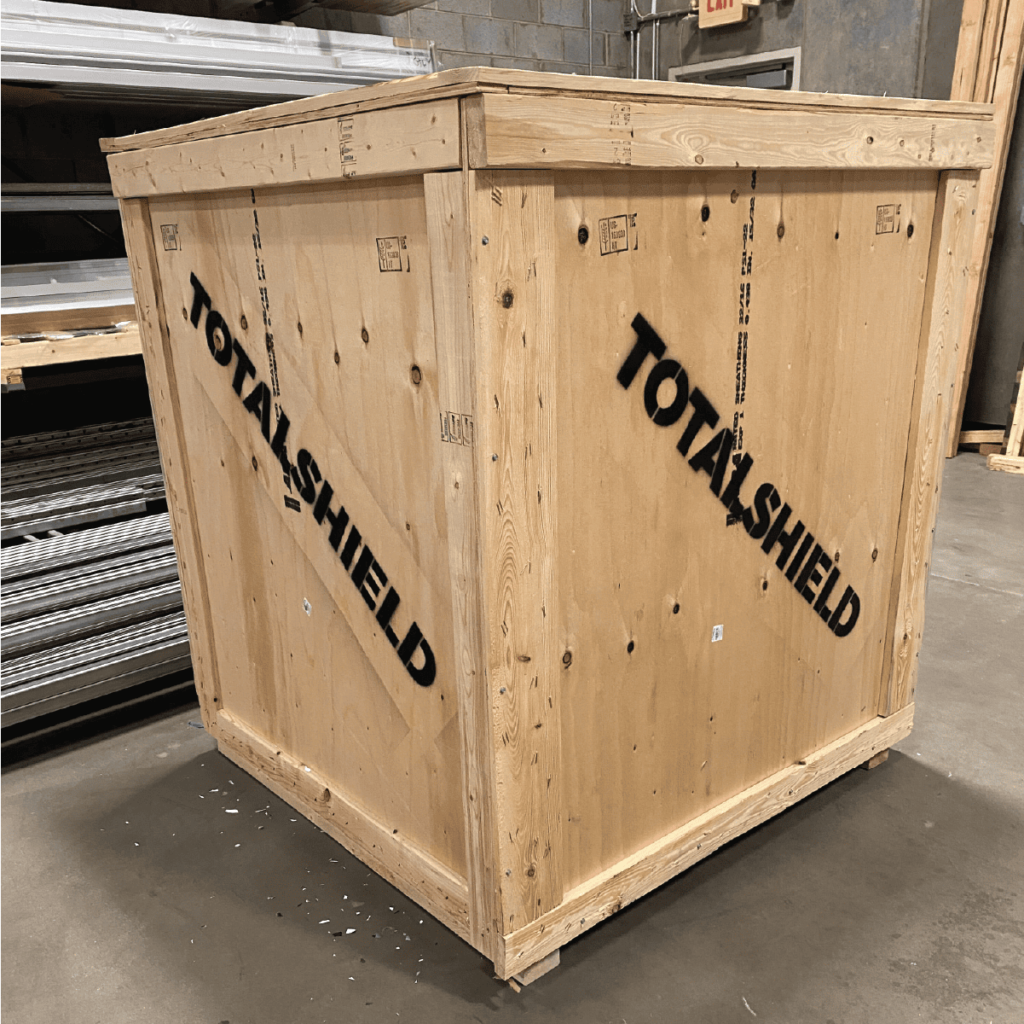
- Shipping and Logistics: We weigh and measure all packages to generate accurate shipping labels, providing the customer with details on the number of boxes, their weight, and expected delivery dates.
- Supervision of Product Unloading and Installation: Our team oversees the unloading process, determining which boxes should be opened first and which panels need to be unloaded at each stage. We also suggest necessary tools and equipment, such as dollies and PPE.
As you can see, when a shipment has left our facility, every piece has been checked, weighed, and labeled so there would be no surprises on arrival. Our expertise means we can anticipate and resolve issues before they become problems!
Chronicle of a Shielded Room Onsite Assembly
Early challenges
The installation began at 7 AM with a strict security protocol. Special access badges were required, and our team had to check in at two separate buildings before entering the area where the shielded room would be installed. Once onsite, we met with our customer’s team to review the installation plan and site-specific restrictions.
When our customer’s team was ready, we oversaw the unloading process. This is where the organization makes all the difference. The large shielded room had been shipped in multiple crates, and rather than opening everything at once, we guided the team on which boxes to prioritize based on the design layout. Misplacing a panel or grabbing the wrong component can throw off the entire sequence, leading to delays.
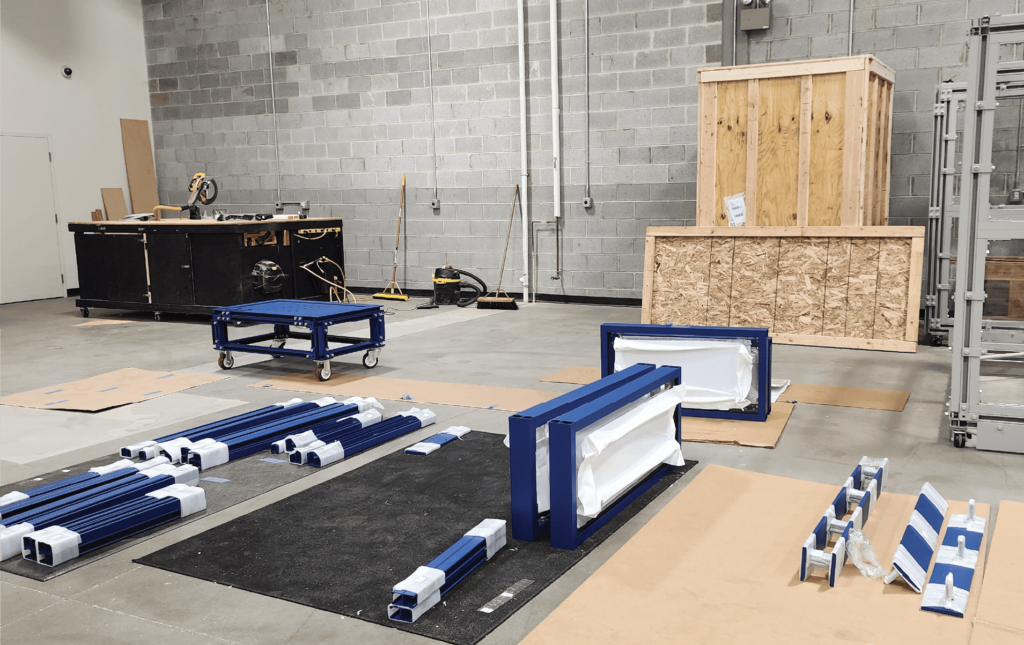
To keep everything moving efficiently, we also made sure beforehand that the team had the right tools ready, such as dollies for moving panels. With everything in place, the real work could begin.
The next step: guarantee the framing was assembled correctly.
Ensuring structural integrity of a blast-rated enclosure
Once the crates were opened in the correct order, we started working on the framing.
Our blast-rated enclosures are crafted with ballistic-rated polycarbonate panels mounted on our modular framing system, and our experience with it is key. If the structural beams aren’t positioned and leveled correctly from the start, everything else will suffer. Shielding isn’t just about assembling panels, as even the smallest misalignment could compromise performance.
As the team began, we reminded them to double-check every connection. Many of the profiles looked similar in size, and it was easy to mistake one for another. To avoid this, we referenced the panel schedule and verified each piece before securing it. The engineers on-site were skilled, but this was their first time assembling one of our enclosures. That’s why our supervision was crucial, as we were able to guide them through potential problem areas before mistakes happened.
Then came one of the most overlooked steps: hardware selection. It might seem trivial, but using the wrong bolts or securing components in the incorrect order could weaken the structure.
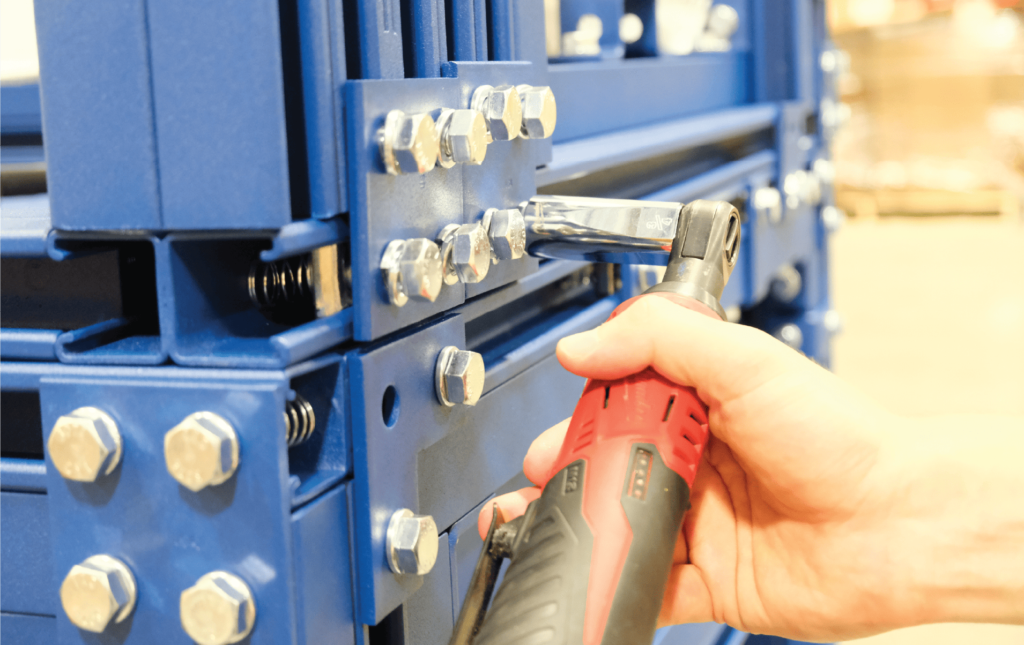
During the assembly, one of the structural beams was damaged during placement. Fortunately, we quickly repaired it to allow progress while arranging for a replacement part to be shipped. We also provided detailed instructions on how the new piece should be installed once it arrives. This immediate response prevented delays and kept the project on track.
Assembly of the Shielded Room
With the framing secured, the next step was the enclosure itself.
One of the biggest risks during this phase is improper fastening. If a panel wasn’t fully seated before securing it, small gaps could form, compromising the shield’s integrity. The importance of even pressure distribution was emphasized: over-tightening in one spot could create warping, while under-tightening could lead to gaps.
A new challenge arose when a section for the anchoring points did not align as expected. Our customer’s original plan had accounted for a specific mounting location, but an unforeseen site condition (a set of unmarked conduits) made it impossible to proceed as designed. Thanks to the additional spare components we provided, adjustments were made on-site, allowing the enclosure to be anchored securely without interfering with existing infrastructure.
With this, our onsite supervision concluded after guaranteeing that another blast-resistant enclosure had been successfully assembled.

Final touches
With the project successfully completed, the value of onsite assembly supervision was once again clear. We were able to make adjustments in real-time, delays were avoided, and our customer walked away with a fully functional shielded room that met their exact needs.
While we were there for the new walk-in chamber, the client also had us inspect a large shielded room originally designed for them over 10 years ago. After verifying its structural and shielding integrity, we provided recommendations for potential upgrades to accommodate newer technologies.
This was a real testament to how well our enclosures endure!
Onsite assembly supervision vs. self-installation
While some customers opt for self-installation, the difference in efficiency and accuracy is significant. Without expert supervision, teams may encounter unexpected challenges, such as misaligned framing, incorrect hardware usage, or overlooked site constraints, all of which can lead to costly delays. Even with a detailed manual, assembling a large shielding room requires precision, and mistakes can compromise its effectiveness.
With onsite assembly supervision, TotalShield guarantees the process stays on track. From prioritizing the correct components to troubleshooting issues in real time, our oversight minimizes errors and reduces downtime. This way, our customers benefit from faster, more reliable installation without the guesswork, ensuring the enclosure performs as intended from day one.
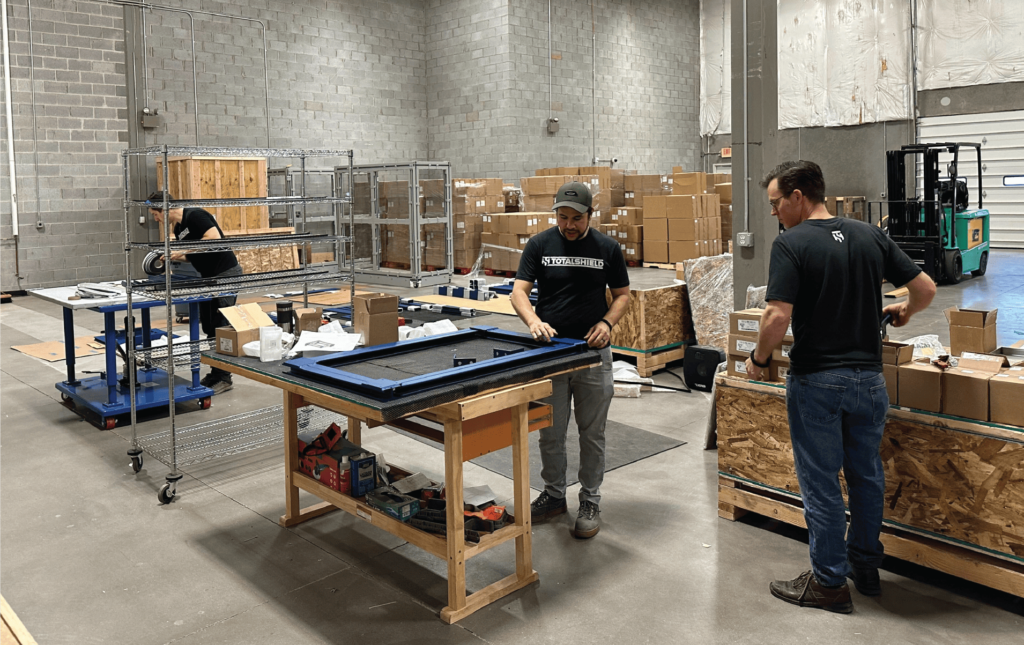
Our compromise to safety
This onsite assembly reminded me why we build our shielded enclosures to last and why expert assembly matters. Whether it’s troubleshooting a damaged beam or adapting to hidden obstructions, having our team onsite guarantees your investment performs as intended from day one. And as we saw with the decade-old enclosure, our designs don’t just meet specs, they outlast them. Expertise oversight really pays for itself.
Need an enclosure that stands the test of time? Let’s talk.

